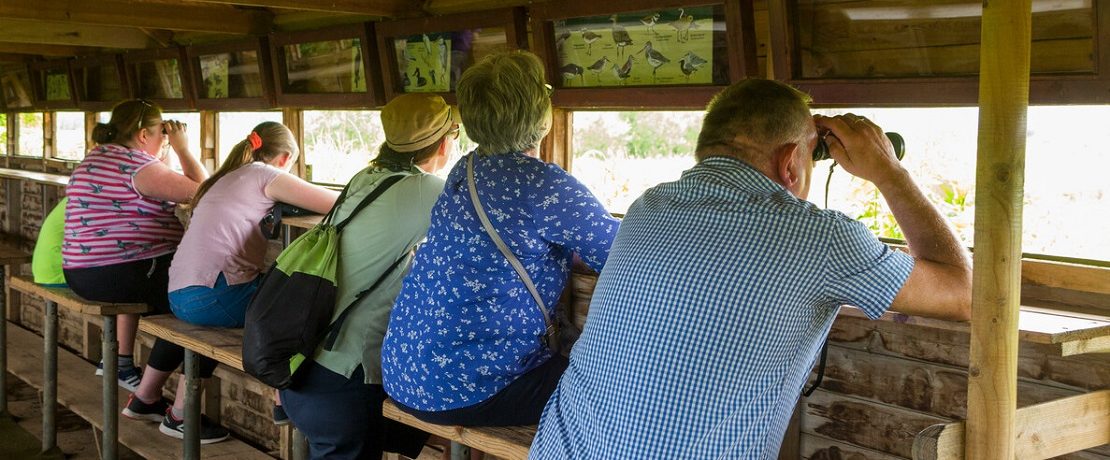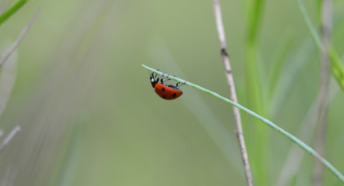A countryside walk in April
It’s a new month, daylight hours are rapidly increasing, and our countryside and green spaces are coming to life with the sights, sounds and smells of spring!
If you took a stroll (or several) last month, hopefully you spotted a few things we mentioned in this article. We’d love you to share your discoveries with us, too, because there are of course differences in nature’s timings up and down the country. You can share your images and videos with us on Facebook, Twitter or Instagram.
Now that we’re into April, a countryside walk is likely to feature a whole host of birds, insects and wildflowers! Here’s a little round-up of what you might find when out and about this month.
Swallows return
The swallows that arrive in Britain spend their winter in South Africa. Over a period of about 40-50 days, they migrate north through Africa, across the Sahara and Morocco, through Spain, the west coast of France and eventually reach British shores.
It’s a long, arduous journey, but swallows making this trip in spring is one of our great natural calendar events. In fact, the traditional Japanese calendar contains 72 ‘micro-seasons’, of which one is 玄鳥至 Tsubame kitaru (Swallows return), from 5-9 April.
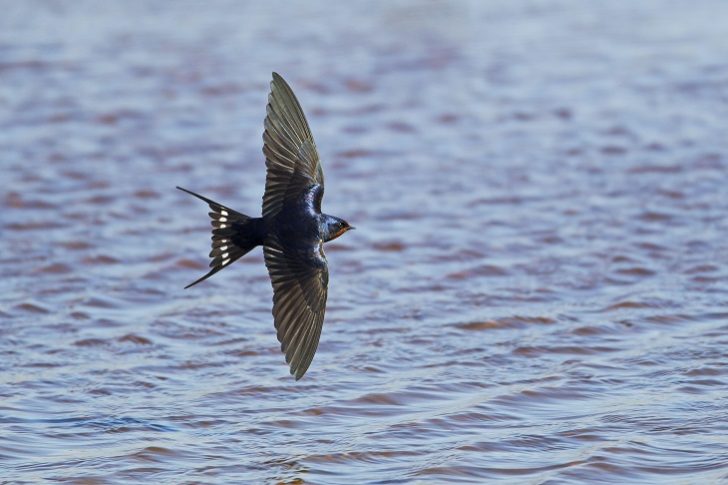
Swallows are very agile birds, and can be spotted flitting through the sky at speed. They have a distinct forked tail and have a diverse call, which features a series of chirps, squeaks and clicks. They’re drawn to open farmland but can be seen anywhere there is ample supply of insects to eat – for example bodies of water which might host mosquitoes and other small flies.
Beautiful bluebells
Surely one of the nation’s most loved flowers, bluebells will begin carpeting rich, earthy woodland floors this month. Some of our favourites are in this article.
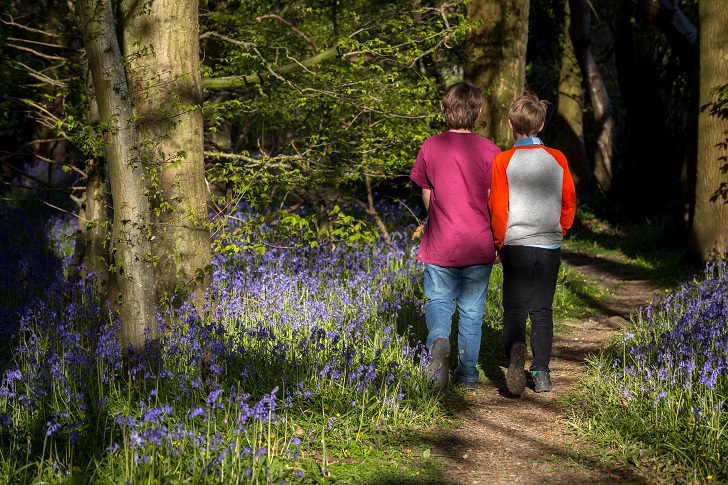
Bluebells are indicators of ancient woodland, so if you’re walking among them in a wooded area, these beautiful plants might have been around for hundreds of years. They’re identifiable by their delicate, tubular bell flowers in shades of violet and blue, as well as their fragile-looking drooping stems, resembling the top of a shepherd’s crook. Native bluebells only flower on one side of the stem, and they’re scented too – so these are two useful ways to confirm which bluebells you’re looking at.
A burst of flora
There are loads of beautiful plants and flowers to look out for in April too – no matter where you live! Bees and other pollinators will be busy this month foraging for nectar from a wide range of wildflowers.
On verges and underneath hedges, look out for cow parsley. This tall plant flowers in umbels (clusters of flowers with stems coming from one centre) and are a beautiful, delicate off-white. The foliage is intricate, and looks a bit like carrot leaves.
While you’re around hedges, look for small red or white flowers on nettle-like leaves. These are dead nettles, and are a favourite of bumblebees. Like the name suggests, it doesn’t sting!
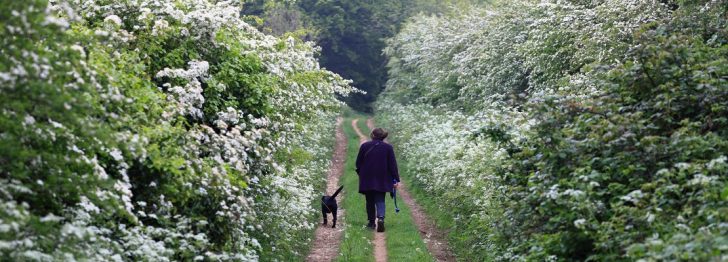
In meadows and open woodland, look for cowslips, a delightful yellow wildflower which stands on tall stems above a mass of dense, textured leaves. These often find their way onto garden lawns too, accompanied by daisies and dandelions (both of which are also common in April).
Also keep an eye out in gardens, hedges, woodland and even small cracks in walls and pavements, where you might find forget-me-nots. Though their powder blue flowers appear delicate, they’re a robust plant and spread quite easily in countryside, woodland and parks.
A taste for garlic
April brings with it two delicious foraging opportunities, if you know where to look.
The first is garlic mustard, also known as jack-by-the-hedge. These are commonly spotted on the edges of woodland, but also crop up in gardens and parks too. They have serrated, nettle-like leaves and tiny white flowers. Their leaves can be added raw to salads where they bring a delicate garlic and spicy mustard flavour, giving salads a super fresh kick.
Secondly, explore wooded areas and shaded banks for ramsons, or wild garlic. You’ll probably smell these before you see them!
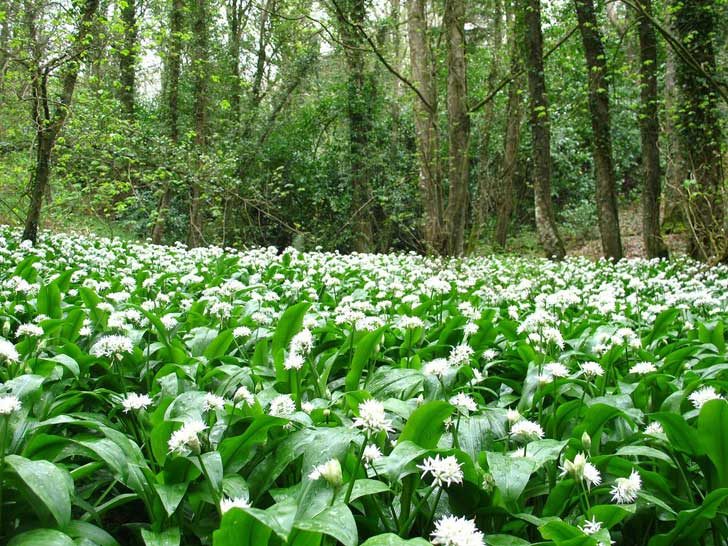
On a base of thick, broad green leaves stand stems of fluffy white flowers. These leaves smell intensely of garlic, and can be added to pasta dishes or ground up with oil and nuts to make an excellent home-made pesto. Remember to always forage responsibly and where appropriate, ask the landowner’s permission!
A rousing dawn chorus
With daylight hours increasingly rapidly now, and the weather warming up, bird activity is extremely high in April.
The breeding season has already begun with some birds, like blackbirds as well as long-tailed, great and blue tits. These productive birds may have made their nests in March or possibly earlier. Others will be looking to breed throughout April, such as chiffchaffs, chaffinches, greenfinches, robins and dunnocks.
Nesting and breeding season normally correlates to plenty of bird action. The dawn chorus becomes lusher and richer as the month progresses, as birds compete for mates. There’ll also be plenty of territorial activity too, with birds competing for prime nesting spots and fiercely protecting their clutches.
So, this month, be sure to set that alarm a little bit earlier and go for a springtime walk in your local countryside, park or green space. The spring dawn chorus really is a humbling and beautiful experience!
Listening to bird song is a calming and grounding activity. If you’re not sure what you’re listing to, there are apps that can help you, or try this RSPB guide to bird calls. Check back soon where we’ll share some of the delights of a countryside walk in May.
Happy walking!
